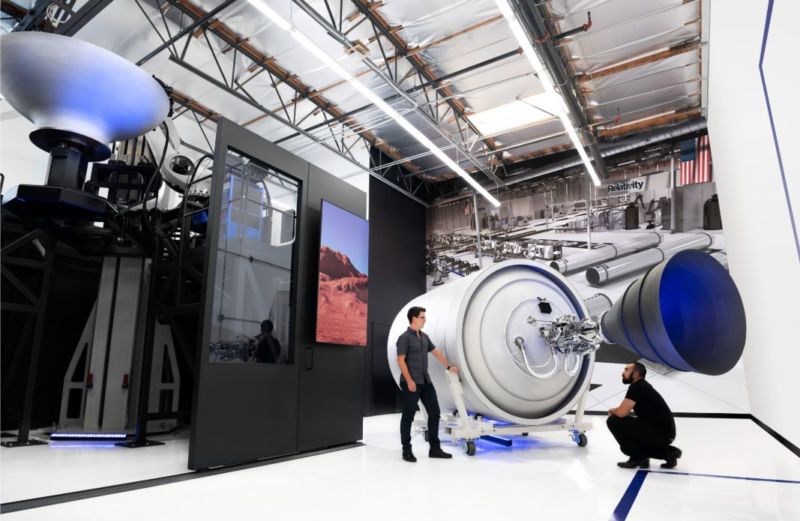
Enlarge/Relativity co-founders Tim Ellis, left, and Jordan Noone pose with a 3D printed second stage of the Terran 1 rocket.
Relativity Space
There’s no question that there are many companies racing to develop rockets to deliver small satellites into low-Earth orbit. And there’s no doubt that the small satellite market — from governments to commercial constellations — will likely only support a handful of private companies.
This situation has complicated fundraising for companies during the critical juncture when they need additional funding to complete the development of their rockets and get into flying operational missions.
Amid this market, however, Relativity Space announced Tuesday that it has closed a $ 140 million Series C funding round led by Bond and Tribe Capital. With this funding, Relativity Chief Executive Tim Ellis tells Ars the company is fully funded to complete development of its Terran 1 rocket and reach orbit.
“Fundraising is always a process,” Ellis said, noting the participation of new investors Lee Fixel, Michael Ovitz, Spencer Rascoff, Republic Labs, and Jared Leto, along with participation from current investors Playground Global, Y Combinator, Social Capital, and Mark Cuban. It speaks to the quality of Relativity’s plans, he said, that such a diverse group investors are backing the ambitious firm. “These investors are very sophisticated when it comes to the financial business case,” Ellis told Ars in an interview.
Relativity has ambitious plans to 3D print the entirety of its rockets, reducing workforce costs and increasing the company’s ability to iterate on rocket design . By using 3D printing, the company can evolve its rocket design from mission to mission, incorporate more complex geometries, and basically try more things more quickly. “I don’t think we’re at the pinnacle of where rocket design is going to get,” Ellis said .
A schedule slip
As part of the fundraising announcement, Ellis also acknowledged that the first flight of the Terran 1 rocket will slip from the end of 2020 into early 2021. Part of the reason for this delay, he said, is a change to increase the width of the payload fairing from 2 meters to 3 meters, which will double the available volume.
Progress is being made on other parts of the rocket. Ellis said the company recently printed and assembled an entire second stage of the rocket and performed more than 200 engine hotfire tests at NASA Stennis Space Center in Mississippi.
Relativity Space has managed to answer a lot of questions about its operations so far. It hasplans to launchfrom Cape Canaveral Air Force Station in Florida, and it will announce a launch site for polar missions by the end of the year. It also said it will builda large factoryin Southern Mississippi.
The main question, then, is whether Relativity can ultimately make 3D printed technology work on a large scale. By announcing a new round of funding, key investors certainly believe in their path forward. But by also announcing a schedule slip, the company has raised a few concerns about the technology leap needed to entirely automate the fabrication of a large rocket capable of lifting 1. 25 tons to low-Earth orbit.







GIPHY App Key not set. Please check settings